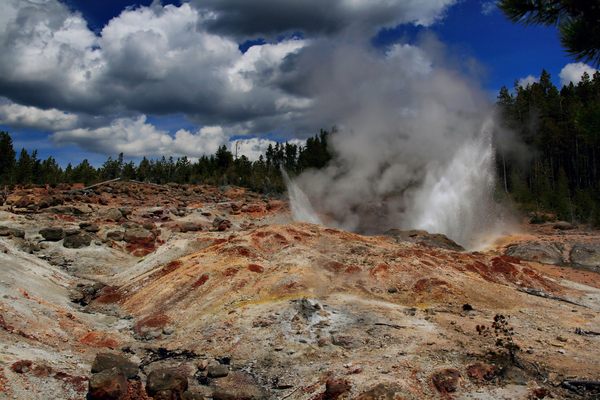Scientists Have Confirmed the Longest Straight Line Over Water
They do not recommend sailing it.

Here’s the premise: You’re in a boat, traveling along a straight line. You want to travel for as long as possible, without crashing into stray islands or running aground. How far can you go, and what’s your route?
Without even looking for it, Reddit user kepleronlyknows stumbled across the answer five years ago. (In civilian life, he’s a lawyer who goes by the name Patrick Anderson.) While navigating the choppy backwaters of Wikipedia, he came across the coordinates of the line on a list of “Extreme points of Earth.” He plotted the distance on a map and then published a video, showing that the line really was straight. It’s an epic journey of 19,940 miles, traveling overseas from southern Pakistan to northeastern Russia across the Arabian Sea, the Indian Ocean, the South Atlantic Ocean, and the entire Pacific.
But whether or not it was actually the longest continuous maritime line remained up in the air—until this month, when a team of scientists from Ireland and India finally proved him right, Science reports. Kushal Mukherjee, an engineer from IBM Research India in New Delhi, worked with the physicist Rohan Chabukswar, from United Technologies Research Center Ireland, to solve the puzzle, using computers, complicated geometry, and a bit of lateral thinking. They published their results online last week.
Any line that goes all the way around a sphere, or the globe, is called a great circle. Like the equator, great circles cut the earth in half, producing the maximum possible length of any straight line around it. At first, Mukherjee and Chabukswar married great circles with computer-aided brute force in search of the solution. The National Oceanic and Atmospheric Administration’s ETOPO1 Global Relief model of Earth’s surface differentiates between water, ice, and land. Using a standard laptop computer, the team attempted to examine every possible great circle on the planet with this model. But with some 233,280,000 possible contenders, yielding a further 5,038,848,000,000 “land or sea” points that would need to be checked, the computation was too unfathomably vast.
Instead, they took another tack, as Science reports, using an optimization algorithm known as “branch and bound.” This program selected a few batches of all possible great circles, narrowing in again and again on the most likely options. After just ten minutes of processing, their “standard laptop” spat out the answer: The mysterious Wikipedia contributor was correct.
The line runs from the beach town of Sonmiani, Pakistan, “threading the needle” between Africa and Madagascar, and then between Antarctica and Tiera del Fuego in South America. It finishes in Russia’s remote Karaginsky District. It fits the brief—the longest continuous line across the earth’s waters—but you may want to think twice before firing up your rudderless boat. The authors note, a little pointedly: “The problem was approached as a purely mathematical exercise.”









Follow us on Twitter to get the latest on the world's hidden wonders.
Like us on Facebook to get the latest on the world's hidden wonders.
Follow us on Twitter Like us on Facebook